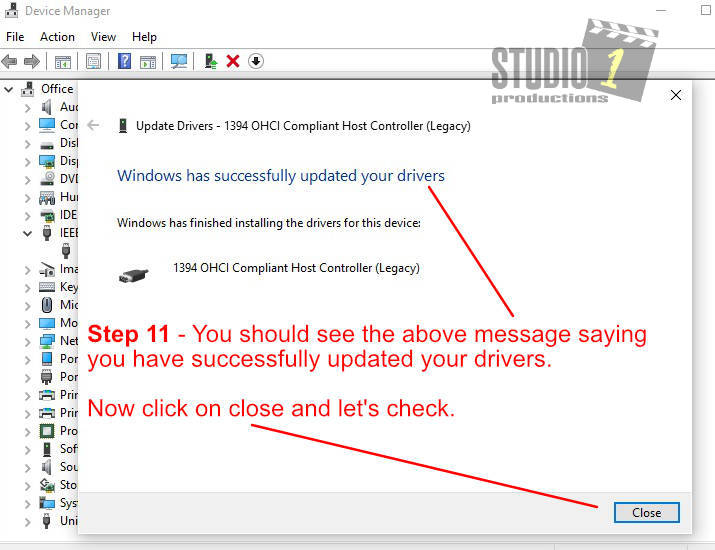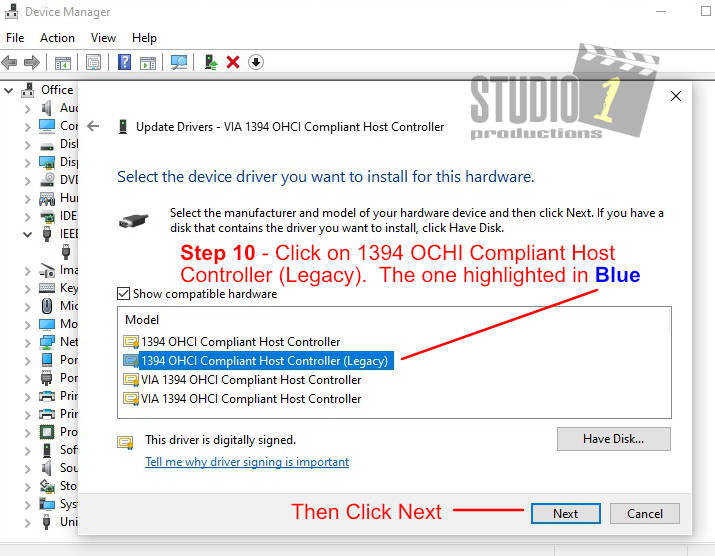Summary
Windows Driver Package - Phase One / Mamiya V-Grip USB Driver ( 1.2.0.0) is an application marketed by Phase One / Mamiya. Sometimes, computer users choose to uninstall it. Sometimes this is hard because removing this by hand takes some experience related to Windows internal functioning. After some d.cking around installing and un-installing various older (heritage etc) 1394 drivers that were resident in Win 7 and the ones that I could download from the site of my newly installed expansion card, Vegas finally saw my DSR-11 and we all edited happily ever after. Just remember to reboot after each installation of a driver.
This article contains information about how to obtain Microsoft drivers, software updates, and other support files by downloading them from the Microsoft Download Center. For more information, visit the following Microsoft Web site:
http://www.microsoft.com/downloads/Search.aspxNote This is not a troubleshooting article for download issues. This article outlines how to download files from the Microsoft Download Center.
The Microsoft Download Center provides:
Microsoft drivers, service packs, updates, hotfixes, and other support files.
A single starting point for all downloadable files.
The ability to search the whole Microsoft.com site for downloadable files.
Reduced time in finding these files.

Types of files that are available for download
This article contains information about the following file types:
Windows files (.exe)
Archive files (.zip)
MS-DOS files (.exe)
Macintosh-based files (.hqx, .bin, or .sea)
More Information
General instructions for downloading
The files that Microsoft posts on online services are usually compressed, self-extracting files.
Note Small files may not be compressed. These files appear with their original extensions and are not self-extracting.
32-bit and 64-bit operating systems
For more information about identifying 32-bit and 64-bit operating systems, click the following article number to view the article in the Microsoft Knowledge Base:
827218 How to determine whether your computer is running a 32-bit version or a 64-bit version of the Windows operating system
Windows files (.exe)
Files that are designed for Windows operating systems have an .exe extension. These files are compressed, self-extracting files. To correctly download and extract these .exe files, follow these steps:
Locate the file that you want to download. If you are not sure which file to download, you can visit the Microsoft Download Center to help locate your file:
If you are downloading to a disk, you must have a formatted, blank disk. If you are downloading to your hard disk drive, create a new folder where you can temporarily copy the file and open it.
Caution Do not download files directly to your Windows folder. Doing this could overwrite files that are required for the correct operation of your computer.Follow the download procedure that is used by your Internet service provider to download the file that you identified in step 1. Download the file to a disk or to a new folder.
Locate the file in the folder where it was downloaded, and then double-click the file to begin the installation process.
Be aware that some .exe files are compressed by using the PKWare file-compression utility. To correctly download and to extract these .exe files, follow these steps:
Locate the file that you want to download. If you are not sure which file to download, you can visit the Microsoft Download Center to help locate your file:
If you are downloading to a disk, you must have a formatted, blank disk. If you are downloading to your hard disk drive, create a new folder where you can temporarily copy the file and open it.
Caution Do not download files directly to your Windows folder. Doing this could overwrite files that are required for the correct operation of your computer.Follow the download procedure that is used by your Internet service provider to download the file that you identified in step 1. Download the file to a disk or to a new folder.
To extract the contents of the self-extracting .exe file after you download it, click Start, click Run, and then type the following command:
<pathfilename> -dIn this command, <pathfilename> is the folder location and the name of the downloaded file.
For example, if you downloaded Sample.exe to the C:Download folder, type the following command:C:DownloadSample.exe -dNote Although you can double-click a self-extracting .exe file to extract its contents, this step makes sure that a recursively compressed file will maintain its file structure.
If you have problems extracting downloaded files, try downloading them again.
Archive files (.zip)
Files that are designed to archive multiple files have a .zip extension. These files are compressed. Such .zip files are automatically compressed and expanded in Windows XP and in Windows Vista operating systems, and such files do not have to use the WinZip utility.
For more information about WinZip, please visit the following Nico Mak Computing, Inc., Web site:
http://www.winzip.comMicrosoft provides third-party contact information to help you find technical support. This contact information may change without notice. Microsoft does not guarantee the accuracy of this third-party contact information.
To correctly download and to extract these .zip files, follow these steps:
Locate the file that you want to download. If you are not sure which file to download, you can visit the Microsoft Download Center to help locate your file:
If you are downloading to a disk, you must have a formatted, blank disk. If you are downloading to your hard disk drive, create a new folder where you can temporarily copy the file and open it.
Caution Do not download files directly to your Windows folder. Doing this could overwrite files that are required for the correct operation of your computer.Follow the download procedure that is used by your Internet service provider to download the file that you identified in step 1. Download the file to a disk or to a new folder.
Locate the file in the folder where it was downloaded, and then double-click the file to open it.
MS-DOS files (.exe)
These .exe files are compressed by using the PKWare file-compression utility. To correctly download and to extract these .exe files, follow these steps:

Locate the file that you want to download. If you are not sure which file to download, you can visit the Microsoft Download Center to help locate your file:
If you are downloading to a disk, you must have a formatted, blank disk. If you are downloading to your hard disk drive, create a new folder where you can temporarily copy the file and open it.
Caution Do not download files directly to your Windows folder. Doing this could overwrite files that are required for the correct operation of your computer.Follow the download procedure that is used by your Internet service provider to download the file that you identified in step 1. Download the file to a disk or to a new folder.
To extract the contents of the self-extracting .exe file after you download it, click Start, click Run, and then type the following command:
<pathfilename> -dIn this command, <pathfilename> is the folder location and the name of the downloaded file.
For example, if you downloaded Sample.exe to the C:Download folder, type the following command:C:DownloadSample.exe -dNote Although you can double-click a self-extracting .exe file to extract its contents, this step makes sure that a recursively compressed file will maintain its file structure.
If you have problems extracting downloaded files, try downloading them again.
Macintosh-based files (.hqx, .bin, or .sea)
If a file is a Macintosh-based file, it has an .hqx or a .bin extension. An .hqx file is a BinHex 4.0 text-formatted file, and a .bin file is a MacBinary-formatted file.
When you download the .hqx or the .bin file, you must decode it with Aladdin Systems Stuffit Expander for Windows or with another utility that understands the BinHex or the MacBinary format, such as BinHex 4.0 or CompactPro. Decoding converts the .hqx or the .bin file into an Installer file. As soon as the file is converted to an Installer file, you can double-click the Installer file to install its contents.
The .hqx or the .bin file may also be decoded into a binary-formatted, compressed .sea file. To extract the contents of this file, double-click the <filename>.sea icon.
Phase One A/s 1394 Driver Download For Windows 10 Bit
More Information
Phase One A/s 1394 Driver Download For Windows 10 64
The third-party products that this article discusses are manufactured by companies that are independent of Microsoft. Microsoft makes no warranty, implied or otherwise, about the performance or reliability of these products.




